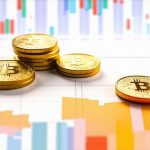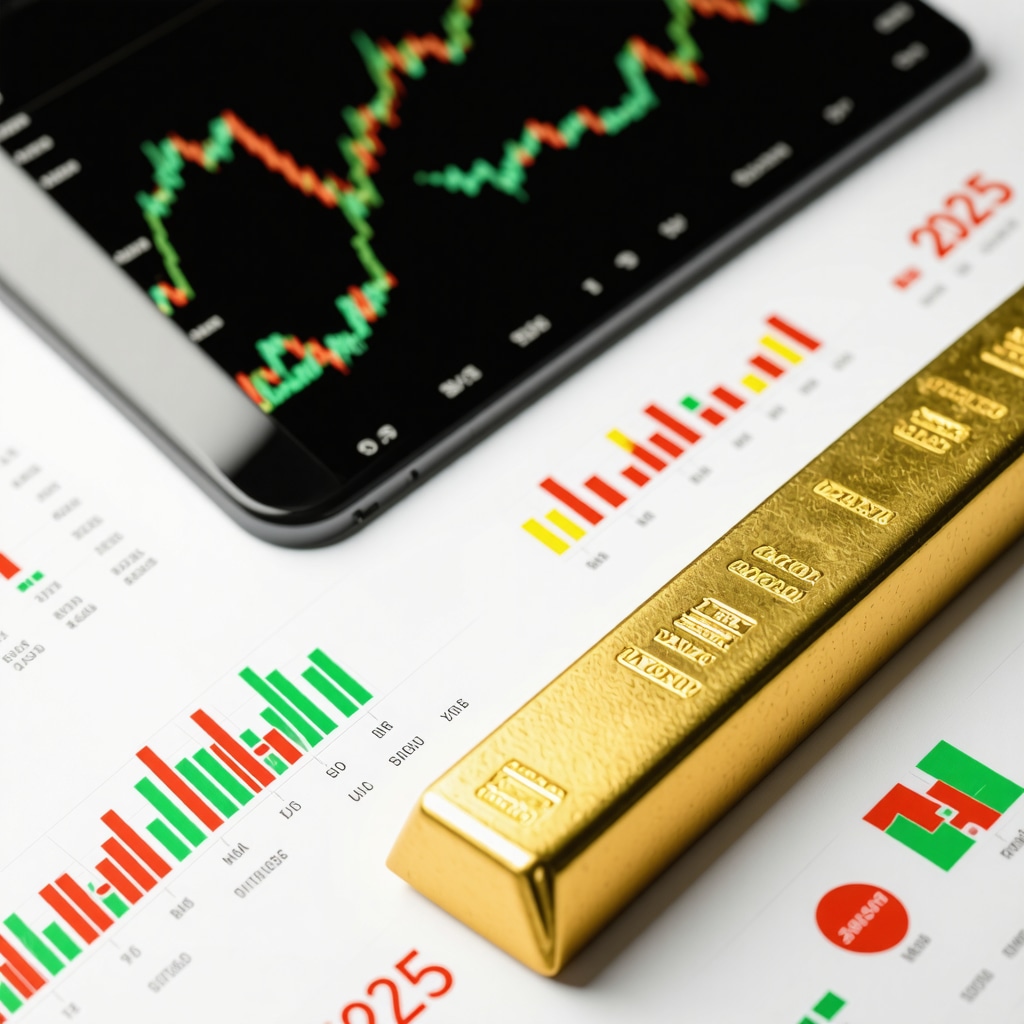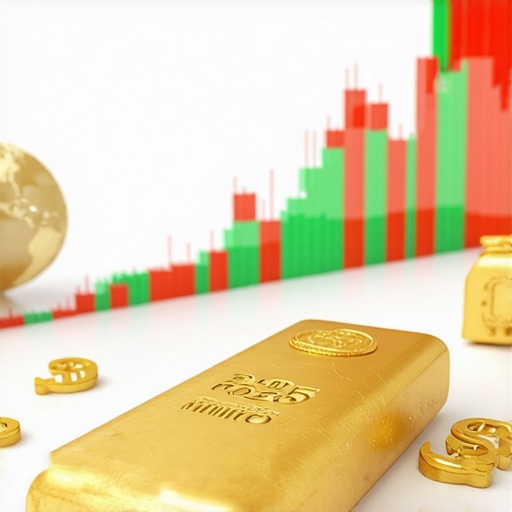Deciphering the Complex Dynamics of Gold Demand and Supply in 2025
As we approach 2025, investors and market analysts are increasingly focused on the nuanced shifts within the gold market, driven by evolving geopolitical tensions, technological advancements, and macroeconomic policies. The strategic importance of gold as a hedge against inflation and currency volatility underscores the necessity for a deep understanding of emerging demand and supply trends. This article synthesizes expert insights to navigate the intricate landscape of gold investing in the upcoming year.
Market-Driving Factors: Beyond Traditional Supply and Demand
How Will Central Bank Policies Shape Gold Market Trajectories in 2025?
Central banks worldwide are recalibrating their gold reserves in response to shifting economic paradigms. Notably, the aggressive gold accumulation by institutions such as the People’s Bank of China and the Reserve Bank of India indicates a strategic move towards diversification and reserve stability. These policies are anticipated to exert upward pressure on gold prices, as detailed in expert analysis of central bank purchases.
Innovative Demand Trends: The Role of Emerging Markets and Technology
Emerging markets continue to drive demand through jewelry and investment channels, with digital gold platforms gaining momentum. Furthermore, technological innovations like blockchain are facilitating increased transparency and accessibility in gold trading, expanding investor base and demand elasticity. These developments are reshaping traditional supply-demand paradigms in gold markets.
Supply Constraints and Mining Innovations: A Balancing Act
On the supply front, new mining techniques and the exploration of secondary gold sources are vital. However, geopolitical risks and environmental regulations could constrain supply growth, adding upward pressure on prices. For a comprehensive understanding, see this detailed report on supply-demand dynamics.
What Are the Key Challenges for Smarter Gold Investing in 2025?
How Can Investors Leverage Advanced Strategies to Navigate Market Volatility?
Investors should consider diversified portfolios incorporating physical gold, ETFs, and mining stocks, alongside sophisticated trading techniques such as options and futures to hedge against volatility. Staying informed through expert analyses and market forecasts enables strategic decision-making and risk mitigation.
For those seeking tactical insights, exploring effective gold trading strategies is highly recommended.
In conclusion, the interplay of geopolitical influences, technological advancements, and macroeconomic policies creates a complex yet promising outlook for gold demand and supply in 2025. Continuous expert engagement and strategic diversification are paramount for smarter investing.
Interested in sharing your expert insights or further exploring these trends? Join our community and contribute to the evolving discourse on gold investment strategies.
Innovative Approaches to Analyzing Gold Market Trends in 2025
As we venture deeper into 2025, the importance of sophisticated analytical tools becomes evident for investors aiming to navigate the complex gold landscape. Traditional methods of supply and demand analysis, while still relevant, are now complemented by advanced models that incorporate macroeconomic indicators, geopolitical developments, and technological shifts. Leveraging data-driven approaches enables investors to anticipate market movements with greater precision, thereby optimizing their investment strategies.
Can Machine Learning Revolutionize Gold Price Forecasting?
Emerging technologies like machine learning (ML) are transforming how experts forecast gold prices. By analyzing vast datasets encompassing historical prices, currency fluctuations, inflation rates, and global economic indicators, ML algorithms can identify subtle patterns and generate predictive insights. This approach surpasses conventional models in adaptability and accuracy, offering a competitive edge for investors seeking to time their trades effectively. For a comprehensive understanding of these innovations, explore this guide on gold price forecasts.
How Do Geopolitical Risks Influence Gold Market Resilience?
Geopolitical tensions, from trade conflicts to regional wars, significantly impact gold’s role as a safe haven asset. Uncertainty tends to boost demand, especially when traditional currencies face volatility. However, the magnitude and duration of these effects depend on the severity and scope of geopolitical events. Experts emphasize the importance of dynamic portfolio adjustments, including allocations to physical gold, ETFs, and mining stocks, to hedge against such risks. For strategic diversification, consider reviewing top types of gold investments for 2025.
What Are the Implications of Central Bank Gold Policies in 2025?
Central banks continue to play a pivotal role in shaping gold prices through their purchasing and sales strategies. As highlighted in recent analyses, increased accumulation by major economies signals a sustained confidence in gold’s stability amid economic uncertainties. These policies can catalyze price rallies, especially if coordinated with global monetary policies. Staying informed about central bank movements is crucial; consult expert insights on central bank activities.
Are you leveraging advanced analytical tools or diversifying your gold investments to navigate 2025 confidently? Sharing your strategies or reading more about innovative approaches can deepen your market understanding. Join the conversation and stay ahead of market trends with expert guidance.
The Impact of Global Monetary Policies on Gold Price Volatility in 2025
In 2025, the influence of global monetary policies on gold prices becomes increasingly pronounced. Central banks worldwide are adopting unconventional measures such as quantitative easing and interest rate adjustments to stabilize their economies. These measures often lead to currency depreciation, prompting investors to seek refuge in gold, which historically acts as a hedge against fiat currency devaluation. According to a detailed analysis by the International Monetary Fund (IMF), coordinated monetary easing has correlated with short-term spikes in gold demand, especially during periods of economic uncertainty (IMF report on monetary policy effects).
Decoding Technological Innovations: Blockchain and Gold Trading Transparency
Blockchain technology is revolutionizing gold trading by enhancing transparency, security, and accessibility. Digital gold platforms leveraging blockchain verify the provenance of gold, reduce transaction costs, and enable fractional ownership, thus democratizing access for retail investors. These innovations challenge traditional supply-demand models by increasing market liquidity and reducing barriers to entry. Experts suggest that integrating blockchain into gold investment strategies can mitigate counterparty risk and improve portfolio resilience during volatile periods.
What Are the Nuanced Risks of Relying on Blockchain-Backed Gold Investments?
While blockchain offers transparency, it also introduces distinct risks such as cybersecurity threats, regulatory uncertainties, and technological obsolescence. Investors must evaluate the robustness of the underlying blockchain infrastructure, ensure compliance with evolving legal frameworks, and consider the potential for digital asset theft. A comprehensive understanding of these risks is essential for integrating blockchain-based gold assets into diversified portfolios effectively.
Expert Strategies for Navigating Market Shocks in 2025
Market shocks, driven by geopolitical upheavals or unexpected macroeconomic shifts, require adaptive and sophisticated strategies. Portfolio diversification remains paramount, but investors should also explore options strategies such as protective puts or collars to hedge against sudden downturns. Additionally, employing advanced predictive analytics—like sentiment analysis derived from geopolitical news—can provide early warning signals. Firms like Goldman Sachs have emphasized the value of integrating AI-driven models to simulate various shock scenarios and optimize risk-adjusted returns (Goldman Sachs market shock analysis).
Are you actively incorporating these advanced tools into your investment framework? Continued education and engagement with expert content are vital for staying ahead amid unpredictable market dynamics. Join our community discussions to deepen your understanding and refine your strategic approach.
The Future of Gold as a Sovereign Reserve Asset: Trends and Predictions
Looking forward, the role of gold in national reserves is poised for transformation. Countries like India and China are not only increasing their holdings but are also exploring sovereign gold bonds and international gold swap agreements to diversify their reserve portfolios. These strategies aim to balance liquidity needs with long-term stability. According to the World Gold Council, this shift signals a recognition of gold’s enduring value as a safeguard against geopolitical and economic volatility (World Gold Council research).
Investors should monitor these policy developments as they can influence global gold prices and market sentiment significantly. Engaging with expert analyses and strategic foresight tools enables more nuanced positioning in the evolving landscape.
Unlocking the Secrets of Gold Price Volatility in 2025: A Deep Dive into Macro and Microeconomic Interplay
As global markets continue to evolve, understanding the intricate relationship between macroeconomic policies and gold price fluctuations becomes crucial for sophisticated investors. Central banks’ unconventional monetary policies, such as quantitative easing and interest rate adjustments, create a complex landscape where gold acts as both a refuge and a barometer of economic stability. According to the International Monetary Fund’s recent report on monetary policy effects, these policies often lead to short-term spikes in gold demand, especially amid currency devaluations and inflationary pressures.
How Can Investors Effectively Utilize Quantitative Models for Market Prediction?
Emerging quantitative models leverage machine learning algorithms trained on vast datasets, including historical price trends, geopolitical events, and macroeconomic indicators. These models can identify subtle market signals and forecast potential price movements with unprecedented accuracy. Integrating such tools into investment strategies allows traders to anticipate volatility and position accordingly, thereby enhancing risk-adjusted returns. Notably, firms like Goldman Sachs employ AI-driven analytics to simulate various shock scenarios, providing a strategic edge in turbulent times (Goldman Sachs market shock strategies).
What Are the Strategic Implications of Geopolitical Risks for Gold Investors?
Geopolitical tensions, including trade disputes and regional conflicts, significantly influence gold’s safe-haven status. Sophisticated investors monitor real-time geopolitical risk indices and incorporate dynamic hedging techniques, such as options and collars, to mitigate potential losses. Moreover, advanced portfolio diversification—balancing physical gold, ETFs, and mining equities—becomes vital in maintaining resilience. As the geopolitical landscape becomes more volatile, the importance of proactive risk management and continuous market surveillance cannot be overstated.
Could Blockchain Technology Revolutionize Gold Investment Security and Transparency?
Blockchain integration in gold trading enhances the traceability and security of transactions, reducing counterparty risk and streamlining compliance. Digital gold platforms utilizing blockchain verify provenance and facilitate fractional ownership, democratizing access for retail investors. However, reliance on this technology introduces nuanced risks, such as cybersecurity vulnerabilities and evolving regulatory landscapes. Investors need to conduct rigorous due diligence, considering the robustness of underlying blockchain infrastructure and legal frameworks, to effectively incorporate these innovations into their portfolios.
What Are the Long-Term Risks and Rewards of Relying on Blockchain-Backed Gold Assets?
While blockchain-backed gold assets offer transparency and liquidity, they also entail risks like technological obsolescence and regulatory uncertainties. A comprehensive risk assessment, including cybersecurity measures and legal compliance, is essential for integrating these assets into diversified portfolios. As this technology matures, it may redefine traditional gold investment paradigms, offering both opportunities and challenges for the discerning investor.
Anticipating Market Shocks: Advanced Hedging and Scenario Analysis Techniques
Market shocks driven by geopolitical upheaval or macroeconomic shifts necessitate sophisticated hedging strategies. Utilizing options, futures, and dynamic asset allocation models enables investors to protect portfolios against sudden downturns. Additionally, sentiment analysis derived from geopolitical news and social media can serve as early warning indicators, providing valuable insights for preemptive action. Institutions like Goldman Sachs emphasize the importance of integrating AI-driven scenario simulations to prepare for unpredictable market shocks, thereby safeguarding wealth during turbulent periods (Goldman Sachs on market shock strategies).
The Evolving Role of Gold in Sovereign Reserves: Strategic Diversification and Policy Trends
As nations reassess their reserve compositions, the strategic inclusion of gold gains prominence. Countries like China and India are not only increasing their holdings but also exploring sovereign bonds and swap agreements to enhance liquidity and stability. These policy shifts, highlighted in the World Gold Council’s research on reserve management, underscore gold’s enduring value as a safeguard against geopolitical and economic uncertainties. Investors should monitor these trends closely, as they influence global demand and market sentiment, offering potential opportunities for strategic positioning.
Expert Insights & Advanced Considerations
1. Central Bank Diversification Strategies Are Reshaping Market Stability
Leading economists highlight that the increasing accumulation of gold reserves by central banks such as China and India signifies a strategic shift towards diversification, which is likely to exert upward pressure on gold prices and influence global market stability. Investors should monitor these policies through authoritative reports like this analysis of central bank purchases.
2. Technological Innovations Are Democratizing Gold Investment
Blockchain technology is transforming gold trading by enhancing transparency, security, and fractional ownership options, thus broadening investor participation and demand elasticity. Strategic investors are advised to evaluate blockchain-based assets carefully, considering risks outlined in this detailed report.
3. Supply Constraints Require Advanced Mining and Exploration Techniques
Geopolitical risks and environmental regulations may constrain gold supply growth. Experts recommend leveraging innovative mining technologies and secondary sources, as discussed in this resource, to anticipate price movements.
4. Market-Shaping Factors Call for Sophisticated Hedging and Scenario Planning
Dynamic portfolio strategies, including options and futures, along with AI-driven scenario analysis, are crucial for navigating volatility driven by geopolitical and macroeconomic shocks. Consult this expert analysis for advanced tactics.
5. Gold’s Role in Sovereign Reserves Continues to Evolve
Countries are exploring sovereign bonds and swap agreements, recognizing gold’s value as a safeguard. Follow this research to stay informed on reserve management trends.
Curated Expert Resources
- International Monetary Fund (IMF) Reports: In-depth analysis of monetary policy impacts on gold prices, essential for macroeconomic insights.
- World Gold Council Publications: Authoritative data on gold reserves, demand trends, and strategic forecasts for 2025.
- Goldman Sachs Market Analysis: Cutting-edge scenario planning, risk management techniques, and market shock strategies.
- Blockchain and Digital Gold Platforms: Leading industry reports on technological innovations and their implications for transparency and security.
Final Expert Perspective
As the landscape of gold demand and supply in 2025 continues to evolve under geopolitical, technological, and macroeconomic influences, maintaining an expert-level understanding is vital. Strategic investors who leverage authoritative insights, cutting-edge analytical tools, and diversified portfolios will be best positioned to capitalize on emerging opportunities. Engage with these resources, share your insights, and stay at the forefront of gold market developments to ensure your investment strategies remain resilient and adaptive in this dynamic environment.










